
for more pics: http://www.flickr.com/photos/silkroadproject/sets/72157594561828639/
Nuo Xi
In Yin and Mao Dan Villages, they used to perform their local Nuo Xi, exorcist theatre from Chu 7 to Chu 15, starting on the 7th day of the New Year. But now, to accommodate the villagers who leave around the 7th or 8th to return to their jobs in the city, the ritual has started earlier.
Apart from the dates, nothing much else has changed in the exorcist ritual – during which the village bridges the divide between the earthly and the divine hoping to chase and stamp away evil spirits. Spectators stand before the ancient show as male actors call on sacred and dangerous forces that seem to climb out of the walls, out of the incense urns and the percussion band’s beats. The movements are recognizable yet obscure, filled to the brim with meanings unknown to outsiders. There are spirits descending from the mountains, swimming up-stream, emerging from the village’s alleys. It is an eerie and powerful show, which starts at dusk.
Boundaries Broken
We arrive on the morning of Chu 5 through haphazard bus encounters and truck rides hitched on mountain roads. We follow the pock-faced busted teeth Mr. Liu, who obviously has spent too many nights with the baijiu bottle. He and his family turn out to be wonderfully hospitable and give us a room in their freshly built and painted house hidden in the shadow of the mountain. We spend two nights with them, coming home in the early hours of the morning when the exorcist theatre ends, eating candied peanuts and sipping local green tea. Three to the hard wooden bed.
A comfortable home turns out to be a necessity after the madness of the grenzenganger – these actors walking between life and death, between earth and heaven, dancing to the insidious beating of the metallic gong. Together with the sulfuric bust and burst of flames and crackers, and the thick sultry almost nauseating vapors of incense – we are stepping on the limits of folly. Come armed with strength and disbelief. The ritual is overwhelming – imposing itself on all the senses. The painted wooden masks worn by the actors immobilize emotions, and it is as if spirits are walking before us, emotionless, lost in the delirium. We are stroking the demonical: beautiful color and bang among which frozen faces move and talk in foreign tongues.

The dance and movements of the actors are repetitive and intoxicating – and if the spectator is not sucked into boredom he or she is brought to rapture by the physical mantra unraveling slowly on stage. These are physical prayers cadenced by deafening percussion - footsteps slowly drawing patterns and symbols on the stage. Every movement has meaning. “The Nuo performance is based on the step known as the Yu step, which is a sequence of eight steps across the Luo diagrm. The actor stamps with one foot, and drags the next foot to join in the movement. The pattern of the feet on the earth in the Yu step, and other steps used in exorcism theatre and Daoist ritual have been recorded as early as the Song dynasty in a Daoist manual (…)”. (source: Jo Riley, Chinese Theatre and the Actor in Performance. Cambridge: Cambridge University Press, 1997). The actors are tracing diagrams on the ground, writing characters with their movements: physical poetry infused with ancient meaning.

“Stamping on the earth in the Chinese model carries the meaning of suppressing evil spirits, so the simplest interpretation of the Yu step is that the performer ritually cleanses the stations of the grid by stamping his foot in each. These movements place the foot and the earth into strong relation with each other. Not only does the stamping foot literally press down the demon, it also calls forth a terrific force and an equally terrific sound. The percussion orchestra in the nuo is a vital element of the performance.” (source: Jo Riley)


The first night at around 6h00, two young boys walk through the village beating a gong. The ritual is about to start, the offerings to Buddha are being made. We are still eating dinner, and Mr. Liu wants us to finish before we go. We shall arrive after the fall of dark to the furious explosions of thousands of crackers, entering the small wooden temple transformed into a theatre (or is the stage a wide altar?) alight with burning incense and song. Old women come in and out, very few of the villagers are attending – but the music and crackers are heard throughout the valley.
Politics
I am pulled out of the temple all of the sudden – Sarah and I must leave - two villagers say. The Village Head wants to talk with us. Angry, he asks us who we are, what we are doing here, why we are filming. (He’s obviously right to ask). Have we not thought about our security, he asks red with rage? Theo must be somewhere among the crackers – they haven’t pulled him out. Sarah and I look at each other – here we go – we pull out our best Chinese manners, our feminine smiles, our pardons and excuses, we tell them our story. Quickly enough, I’m surprised, we are finally released and told that we are now safe – they release us with only a word of warning for the crackers which could be dangerous. Indeed we enter back into the war of crackers raging in the courtyard before the temple and dodge balls of light as we zigzag to the temple door.
That night I watch the ritual bewildered and amazed. I walk back home through the dark before the end, seeking the calm of an empty house and a cup of green tea.
Revival
The Nuo Xi has been revived in four villages in this valley – hidden between the Huang Shan Mountains and the Yangtze River. There are variances in the Nou Xi rituals for each village, although Yin and Mao Dan village share the same rituals and the same set of 28 masks. Mao Dan is a 10 minute walk up-hill from Yin village.


The morning of Chu 6 we accompany the procession of the masks as they are transferred in their alter from Yin village to Mao Dan. It is a sacred procession colored by flags and escorted by fire-crackers lit in front of every door. Arriving at Mao Dan, the masks are cleaned one by one to the rhythm of a pounding gong. The effect is lessened by daylight, but the gong nonetheless brings a trance-like momentum. Theo is overwhelmed by the beat and has to step out into the mountain air. Only men touch the masks and can step onto the temple stage. This is a sacred and forbidden space – in which ancient rules and gestures have been revived. for pics of the procession: http://www.flickr.com/photos/silkroadproject/sets/72157594561811683/
The revival of the Nuo Xi ritual in Mao Dan is linked to one man, Yao Guang Bao. Now deceased, he once knew all the words and songs of the Nuo Xi. He carried the ritual through the prohibition of the Cultural Revolution and wrote it out again in 1980. Some of the theatre books were also buried during the revolution, and taken out for the revival. All but three masks however had been burned.
Talking to Yao Guang Bao’s nephew, the 55 year old Yao Sheng Li, he tells us that the villagers were able to find the old carpenter that had made the previous set of masks for the village. Living in a neighboring valley he was still alive in 1980. The old carpenter had made the first set for the village in the 1950’s after the masks and the temple had been destroyed by the Japanese who had fought around Maodan village for three nights and three days in the late 40’s. The old carpenter passed away, but Mr. Yao assures that he first taught the skill of the Nuo Xi masks to his son.
The village invested 10,000 RMB in 1980 to remake the mask collection – a veritable fortune.
The 28 masks are shared among the 10 actors, who know each role by heart. There are no rehearsals. Sometimes the younger actors forget their movements and are led by the older men – to the pleasure and bursting laughter of the audience. More people in Maodan watch the ritual, and the bigger theatre with an open-air courtyard makes the watching less suffocating. You can step out and see infinite stars.
There are so many life stories around this ritual
One of the village madmen – a deaf and dumb man – watches the whole show in Maodan, leaning against a wooden pillar. He is left-out and ignored by the villagers, almost like a nuisance. He looks crazy and reminds me of all the madmen that hang out in the village streets, talking to the passersby or being kicked and screamed at by the village kids – gentle kicks as if the kids were actually taking care of them – a bizarre tenderness in the brutality. These madmen, the idiots, are a constant in the villages we cross – the kings of village paths.
The gong announces the start of the meeting Buddha ceremony.
The village crowd gathers in the temple and each person lights an incense stick. They are led in a meditative prayer broken with the same repetitive chorus: joy, wealth and health for the village and its families. The alcohol is then poured into glasses on the altar, while children giggle at the seriousness of the ritual. The villagers kneel and kowtow in the direction of the altar. The gong starts again, pounding, guttural, and meditative. Everyone starts to leave and the fire-crackers are launched. The world splits to pieces and the ghosts run off to hide in mountain caves. Outside a war of fires – through the smoke of the crackers we cannot see across the village courtyard – just shadows moving among the noise. The gong continues, while the women take refuge in the temple. A lull in the crackers and the gong reappears, as if this deep sound was the foundation of the world – always present, always returning. We are coughing on the smell of sulfur and incense.




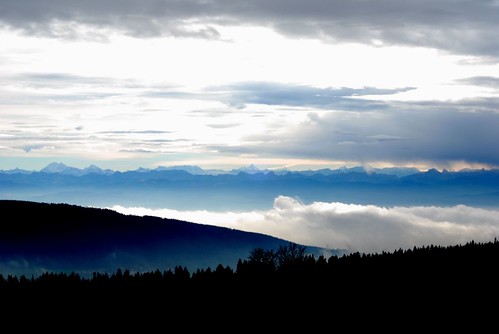
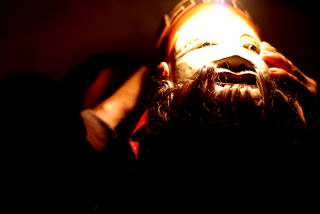
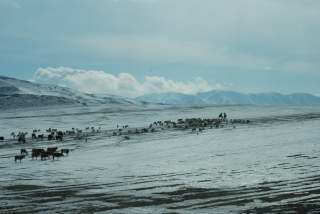
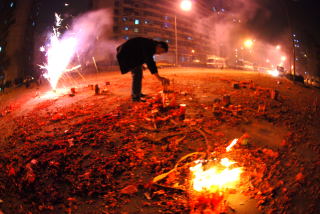
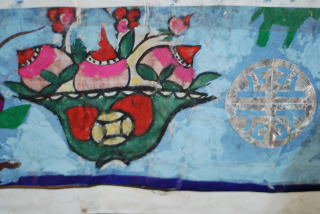

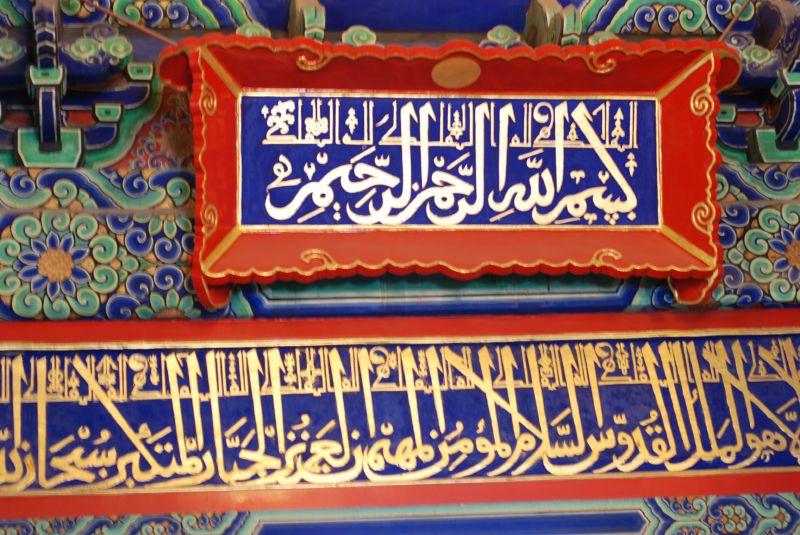
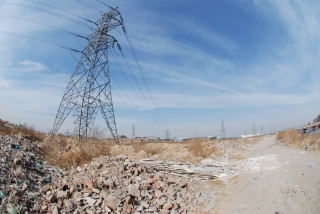
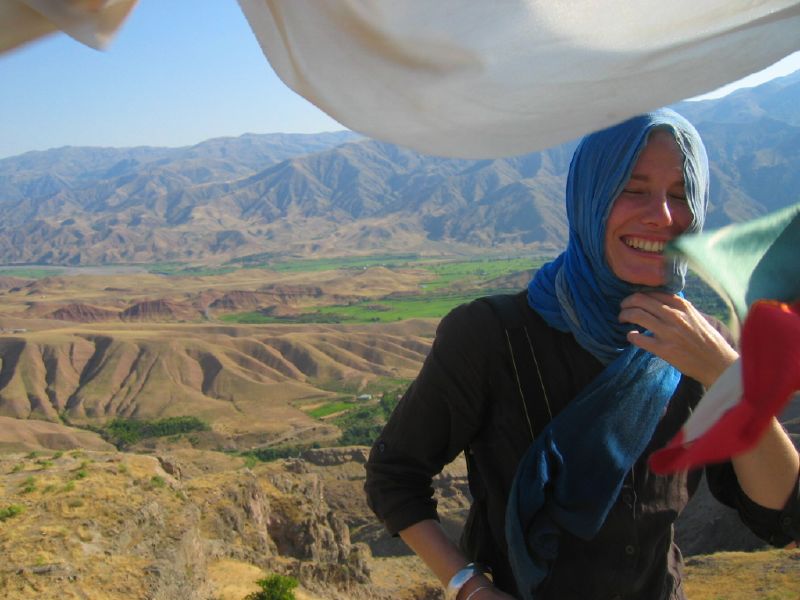
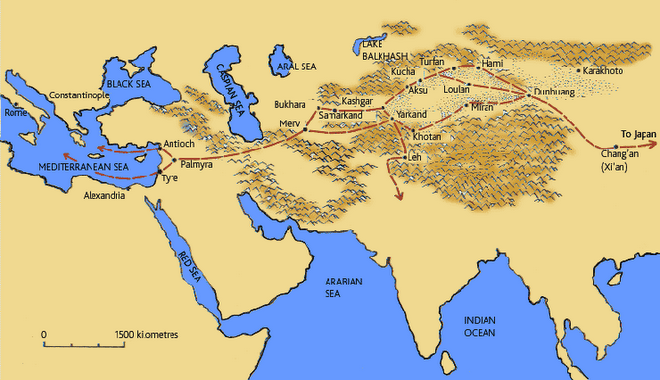
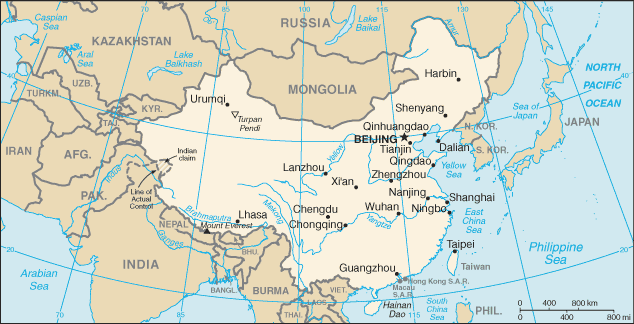
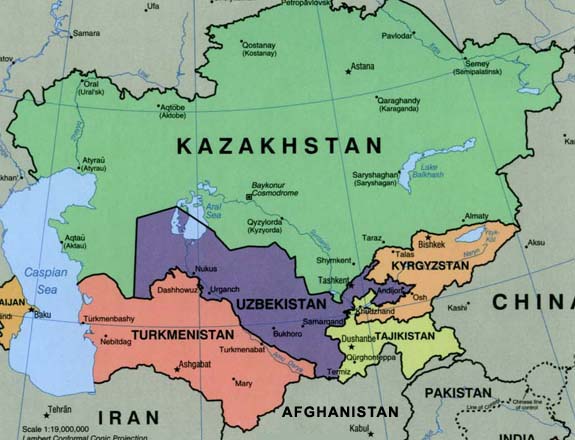
2 comments:
Incredible tale! Dreamy photos! Nice use of the wide angle lens, Anne. But don't forget to put a shot of yourself with your sources on the blog as well. Show yourself connected in.
Bon voyage. Take care of those dry hands!
Paul
PS Did Columbia accept you?
hi,
i've been listening to a program on radio france-culture's religion broadcast (les vivants et les dieux series saturday nights) about the nouxi and other kinds of chinese ritual theater -- so then decided to google for it and found this post! it's just as amazing as they were describing it on the radio! thank you for sharing it!
Post a Comment